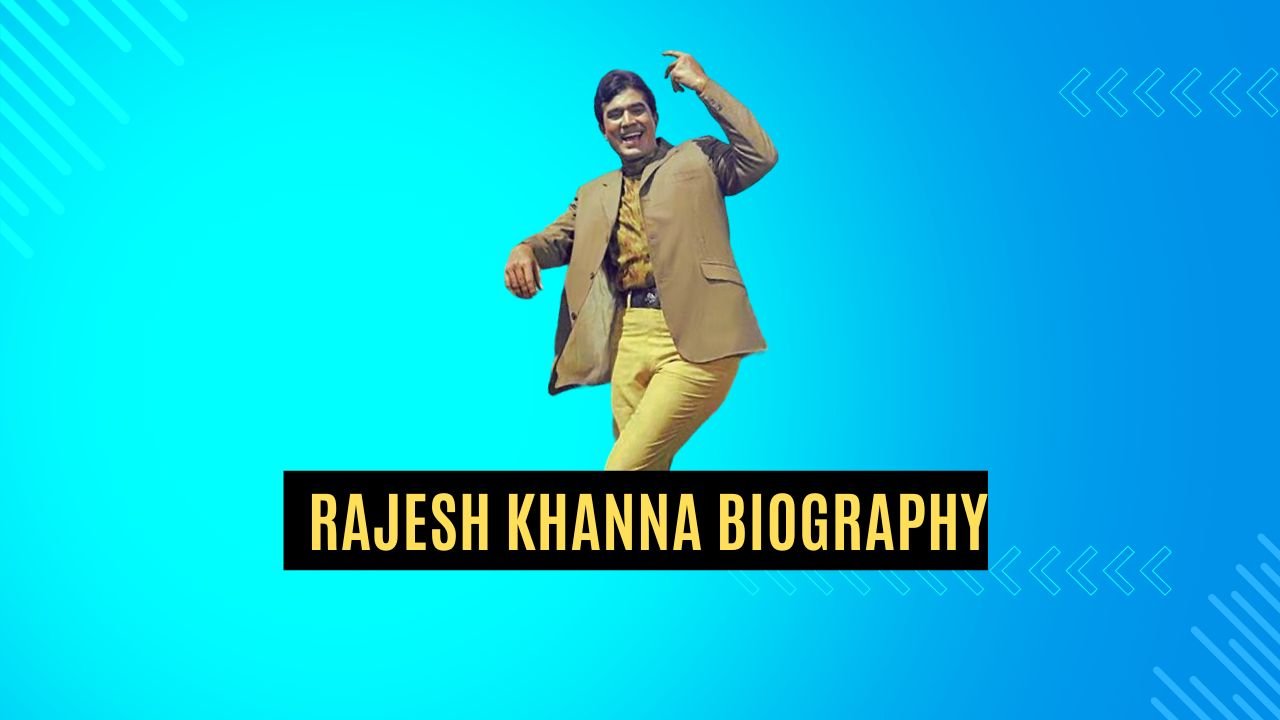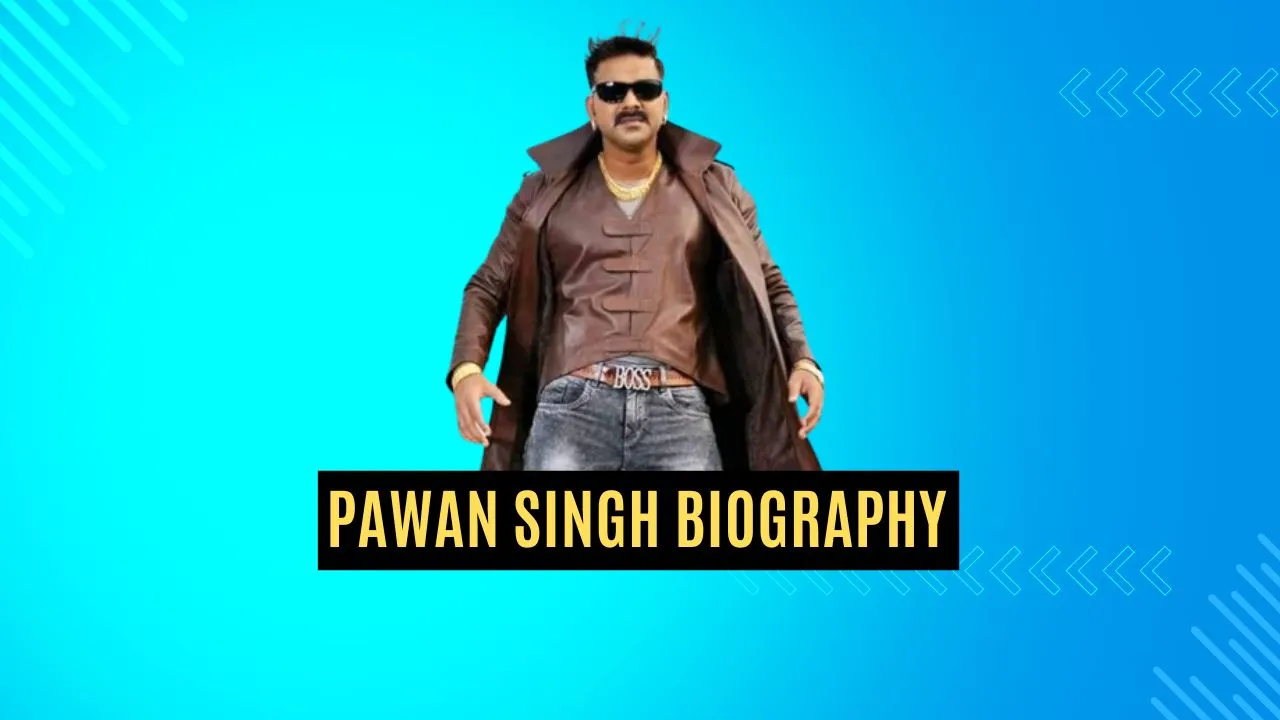Rajesh Khanna Biography: Rajesh Khanna, often referred to as the “First Superstar” of Indian cinema, left an indelible mark on the Bollywood film industry during the 1960s and 1970s. His rise to fame, unmatched popularity, and contributions to Indian cinema continue to be celebrated even decades after his passing. In this comprehensive biography, we delve into the life and career of Rajesh Khanna, exploring the journey of a man who became an icon.
Rajesh Khanna Biography
Early Life and Family Background:
Rajesh Khanna was born on December 29, 1942, in Amritsar, Punjab, India. His birth name was Jatin Khanna, and he was the adopted child of Lala Hiranand and Chandrani Khanna. His parents hailed from a Punjabi family with a background in the textile business. Little did they know that their adopted son would one day become one of the most beloved and celebrated actors in the history of Indian cinema.
Education and Early Career:
Khanna completed his schooling from St. Sebastian’s Goan High School in Girgaum, Mumbai. Later, he pursued a degree in Arts from K.C. College, Mumbai, and a degree in Engineering from the D.J. Sind College, Karachi (now in Pakistan). His educational journey didn’t lead him towards the glamour of the film industry, as he initially harbored ambitions of becoming a pilot.
However, destiny had other plans for him. In 1965, while still in college, Rajesh Khanna won the All India Talent Contest organized by the United Producers and Filmfare magazine. This victory gave him a ticket to Mumbai, the heart of the Indian film industry, to try his luck in acting. He decided to give it a shot and adopted the screen name “Rajesh Khanna.”
Struggles and Early Films:
Khanna’s early years in Mumbai were marked by struggles. He faced the typical challenges that aspiring actors encounter, including rejection and financial difficulties. Despite these obstacles, he persevered and made his film debut in 1966 with “Aakhri Khat,” directed by Chetan Anand. Although the film didn’t create much of a stir at the box office, Khanna’s talent did not go unnoticed.
It was his role in Shakti Samanta’s “Aradhana” (1969) opposite Sharmila Tagore that changed the trajectory of his career. The film’s success catapulted him to stardom and marked the beginning of the Rajesh Khanna phenomenon.
The Rajesh Khanna Phenomenon:
“Aradhana” was a turning point in Indian cinema and catapulted Rajesh Khanna into superstardom. The film’s success, along with Khanna’s charming persona and magnetic screen presence, sparked what is often referred to as the “Rajesh Khanna phenomenon.” His signature style—mesmerizing smile, crinkling eyes, and romantic dialogues—made him the heartthrob of millions.
Khanna’s meteoric rise to fame was characterized by a slew of blockbusters, including “Safar” (1970), “Anand” (1971), and “Bawarchi” (1972). In “Anand,” he played the role of a terminally ill cancer patient, and his poignant performance earned him his first Filmfare Award for Best Actor.
Unprecedented Stardom:
Rajesh Khanna’s unparalleled popularity reached unprecedented heights during the early 1970s. He delivered a string of consecutive hits that included iconic films like “Amar Prem” (1972), “Namak Haraam” (1973), and “Aap Ki Kasam” (1974). His on-screen chemistry with leading actresses like Sharmila Tagore and Mumtaz made him a romantic icon.
One of the hallmarks of his stardom was the hysteria and fan following he generated. Women wrote letters in blood, kissed his car, and even married his photographs. His every film was celebrated with unprecedented zeal, and he was considered an invincible force at the box office.
Challenging the Norms:
Rajesh Khanna’s films not only struck a chord with the audience but also challenged societal norms and addressed critical issues. In “Anand,” he portrayed the fragility of life and friendship in the face of mortality. “Bawarchi” showcased the importance of family bonds, and “Namak Haraam” delved into the themes of labor rights and class divide. Khanna’s choice of scripts and versatile acting skills set him apart from his contemporaries.
Collaborations with Directors and Actresses:
Throughout his career, Rajesh Khanna collaborated with several renowned directors, including Hrishikesh Mukherjee, Shakti Samanta, and Yash Chopra. His chemistry with leading actresses like Sharmila Tagore, Mumtaz, and Asha Parekh was particularly memorable and contributed to the success of numerous films.
Khanna’s association with Kishore Kumar as the playback singer for many of his songs added to his charisma. Songs like “Mere Sapno Ki Rani Kab Aayegi Tu” from “Aradhana” and “Roop Tera Mastana” from “Aradhana” became timeless classics.
Marriage and Personal Life:
In 1973, at the peak of his career, Rajesh Khanna tied the knot with Dimple Kapadia, a promising newcomer in the film industry. The wedding ceremony was a grand affair and received extensive media coverage. However, their marriage faced challenges, and personal differences eventually led to their separation. Despite their separation, the couple remained close, and Rajesh Khanna often referred to Dimple as his “good friend.”
Decline and Struggles:
As the 1970s progressed, the Rajesh Khanna phenomenon began to wane. The changing tastes of the audience and the emergence of new actors contributed to his declining popularity. Films like “Choti Bahu” (1971) and “Avishkaar” (1973) failed to make an impact at the box office.
In an attempt to revive his career, Khanna experimented with different genres, including action and drama. He starred in films like “Maha Chor” (1976) and “Chakravyuha” (1978). While these films showcased his versatility as an actor, they couldn’t recreate the magic of his earlier romantic roles.
Despite the setbacks, Rajesh Khanna continued to act in films throughout the 1980s and 1990s. Some of his notable films during this period include “Souten” (1983) and “Avishkaar” (1993). However, he was no longer the reigning superstar of Bollywood.
Political Endeavors:
In the early 1990s, Rajesh Khanna ventured into politics, joining the Indian National Congress (INC). He contested and won the Lok Sabha elections from the New Delhi constituency in 1992, representing the INC. However, his political career was relatively short-lived, as he faced defeat in the 1996 elections.
Return to Acting:
Despite his political aspirations, Rajesh Khanna continued to act in films during the 1990s and early 2000s. Some of his notable films during this period include “Aa Ab Laut Chalen” (1999) and “Kya Khoya Kya Paaya” (2007). While these films didn’t bring him back to the pinnacle of his earlier success, they demonstrated his enduring passion for acting.
Legacy:
Rajesh Khanna’s legacy in Indian cinema is immense and enduring. He left an indelible mark on Bollywood with his charismatic performances and contributed to the evolution of Indian cinema during a critical period. His films continue to be celebrated, and his songs remain evergreen.
Khanna’s influence extends beyond his film career. His unique style, iconic dialogues, and romantic image have left an indelible mark on popular culture. He inspired generations of actors and remains a source of inspiration for aspiring artists.
Awards and Honors:
Rajesh Khanna’s contribution to Indian cinema was recognized with numerous awards and honors. He received three Filmfare Awards for Best Actor for his roles in “Anand” (1972), “Avishkaar” (1974), and “Namak Haraam” (1975). In addition to these, he received several other awards, including the Bengal Film Journalists’ Association Awards and the BFJA Awards.
In 2012, Rajesh Khanna was posthumously honored with the Padma Bhushan, India’s third-highest civilian award, in recognition of his contributions to the field of arts and entertainment.
Health Issues and Passing:
In the later years of his life, Rajesh Khanna faced health issues, including a brief hospitalization in 2012. On July 18, 2012, he breathed his last at his residence “Aashirwad” in Mumbai. His death marked the end of an era in Indian cinema, and thousands of grieving fans paid their respects to the departed superstar.
Conclusion:
Rajesh Khanna’s journey from an aspiring actor to the first superstar of Bollywood is a story of talent, perseverance, and the indomitable spirit of a man who became an icon. His contributions to Indian cinema, his unforgettable performances, and his enduring legacy continue to inspire and captivate audiences, reminding us that true legends never fade away. Rajesh Khanna will forever be remembered as the romantic hero who ruled the hearts of millions and left an indelible imprint on the history of Indian cinema.



